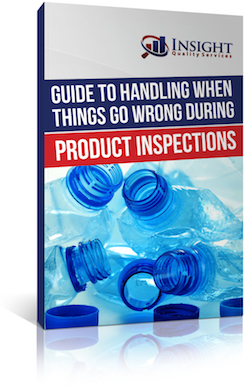Are you concerned that the quality of your products is not living up to customer expectations? Do consumers leave too many negative reviews on your e-commerce platforms or return products too often?
If so, it may be time to think about improving your product quality.
In our years in the product quality business, we’ve helped many companies turn things around. Here we’ll share practical advice to help you understand how to improve the quality of a product.
Table of Contents
What is Product Quality, and Why Does it Matter?

Before you can determine how to fix your quality issues, you first need to understand what quality is. And the most crucial thing to understand is that the customer is at the center of defining it. You cannot impose a definition on them but should instead determine what they value, want, and need.
Do they want a shirt that doesn’t rip easily and doesn’t fade after multiple washes? Do they require a power bank with long battery life so that it doesn’t get depleted quickly? The better you meet a customer’s requirements, the more they perceive your brand as high quality.
By producing higher-quality products, you can build trust with customers, get fewer returns, fuel word-of-mouth recommendations, and improve your ROI. So, now let’s discuss five keys to accomplishing this.
5 Tips to Help You Improve Quality
#1 Start With Product Design and Development

Since customer expectations define quality, quality begins with product development and design. How well does your product’s design match what the target consumer is looking for?
Sometimes, companies experience quality issues and then naively assume their manufacturer is at fault. Upon digging deeper, we find that the problem lies in how the company designed the product.
If a product’s design is flawed, to begin with, it doesn’t matter how well the factory produces it. You need to ensure that the materials, dimensions, components, and all relevant details are optimized to meet consumer demands. LearnMech has an article about the Design for Quality (DFQ) methodology, which is worth considering.
#2 Define What Quality Means for Your Brand
Assuming that you have designed a product that can meet customer needs, you need to provide your specifications to the manufacturer. These specifications should be as detailed as possible so that you can actually hold your manufacturer accountable to them.
Additionally, you should implement your own quality control measures, such as product quality inspections. And during these inspections, you’ll pull production units to verify how well they adhere to your specifications.
But to add specificity, you need to determine your AQL levels, which are based on the acceptance quality level methodology. In other words, you need to classify the different types of defects that could occur and select a percentage of allowable defects.
#3 Establish a Quality Management System (QMS)
According to ASQ, a quality management system is “a formalized system that documents processes, procedures, and responsibilities for achieving quality policies and objectives.”
It is essentially a set of internal rules your organization develops and then follows, designed to help ensure product quality. Implementing a QMS can help you stay compliant with regulations and industry standards and ensure the highest quality products.
Establishing a quality management system, as defined by ASQ, requires you to go through various stages referred to as Design, Build, Deploy, Control, Measure, Review, and Improve. We’ll go into more detail about quality management systems in an upcoming article.
#4 Consider Product Performance Testing

There are various standards for consumer products developed by ASTM and other international organizations. These standards allow you to performance test your products to see how well they will stand up to repeated use.
For example, there are testing standards for office chairs that involve simulating repeated and long periods of sitting by applying weight to the chair. There are various tests for textiles that help determine performance in areas like colorfastness or tensile strength.
Testing your products allows you to verify that they will be able to withstand real-life usage and meet stringent customer requirements.
#5 Develop a Culture of Quality
According to Harvard Business Review, a culture of quality is “an environment in which employees not only follow quality guidelines but also consistently see others taking quality-focused actions, hear others talking about quality, and feel quality all around them.”
Developing a culture of quality is no small feat, and it is an effort that starts from the top. But if you accomplish it, the rewards may be substantial. It can lead to fewer preventable errors with less time and money required to fix them.
HBR conducted a study in which they interviewed quality leaders and employees at 60 multinational corporations. They noted that “A company with a highly developed culture of quality spends, on average, $350 million less annually fixing mistakes than a company with a poorly developed one.”
Take These 5 Tips to Heart for Better Long-Term Results

Increasing product quality is not easy, but by focusing on customer satisfaction, your company will be more likely to get better business results.
Quality starts with good product design and needs to be well-defined. You should consider developing a QMS, conducting product testing, and developing a culture of quality. And by taking these steps, you will be better positioned to meet your quality goals.
If you’ve recently had quality issues surface during an inspection, we recommend downloading the following guide.
Free Guide: What to do When Things Go Wrong
When a quality problem happens - and they will - how you approach the problem makes all the difference in successfully squelching it.
Learn how to deal with the problem at hand, see potential quality gaps throughout your supply chain, and take proactive measures to avoid future problems.





0 Comments